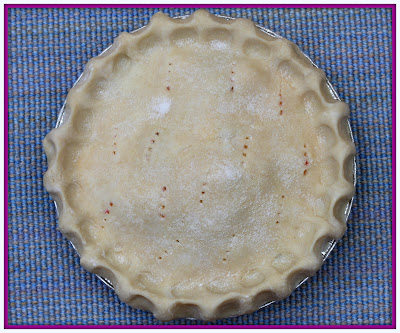When I was a boy, growing up in the country, the Fourth of July meant three things: one was hard work (for a 12-year-old), one was pleasurable work, and one was just plain exciting.
July 4th seemed to be the average date I got to help my Dad and a neighbor farmer, Jim Boylin, bale our hay. While balancing on a moving, bumpy-ride hay wagon, I got to stack the 60-pound bales until it was full; over-my-head high. Then we unloaded them in our barn and stacked them to above the cross beam supports. All the hauling, throwing, lifting and stacking was done by hand; and muscle. All done in the dust, the sweat, and the chaff of July's heat and humidity.
The exciting part was firecrackers! The tiny red ones all bound in flat little red tissue packages. The short fuses all fused together. Most years I was able to get some. Anticipation was as high as expectations.
The pleasurable work, and a sort of reward for the hard work of haying, was picking some Wild Black Raspberries. At that age, in 1960, I had the delicious freedom to wander and explore about 300 acres on four different farms. I knew where to find the Wild Black Raspberries, and when they were ripe and ready for picking.
* * * * * * *
Due to our odd warm spell early during this 2012 spring, the berries are ripe and ready early. I can't tell you exactly where we found these, but my wife joined me for the harvest.
We are very efficient pickers, so if anyone was a few hours, or a day behind us, good luck. We cleaned them out. But there will be more every few days.
Before we get deeper into the thickets and thorns, let's learn a little about the Wild Black Raspberry.
Prickly, or bristly arching stems, called canes.
White flowers, compound leaves, whitish below.
Insect-pollinated flowers in spring; chiefly bees.
Blackberry fruits often dry on the plant, while Black Raspberries fall to the ground when over ripe.
Cloning raspberry stems rise from a perennial base and last for two years; flowering and fruiting only in the second year. Floricanes (second year stems) often show smaller, less divided compound leaves than Primocanes (first year stems).
Black Raspberry often roots again at the arching tip of the stem. Last year, this dark-colored fruiting stem was green. The green cane to the left will bear fruit next year. That's one way it spreads itself, hopping around like this, in very slow motion.
In the late 1970s I thought I made a discovery that Black Raspberries thrive under Black Walnut trees, but I found another author (John Eastman) who knows this to be true.
Rubus fruits are not technically berries, but "Small, black, juicy drupes, packed in diminishing circles about the elongated receptacles, forming a flattened, hemispherical, aggregate fruit". But you can call them berries.
 |
| (This is a six-inch section of stem. Click on any photo to enlarge) |
They have strong, hooked prickles, spines, short thorns, call them what you want, on the rigid, white-powdered stem (cane). We averaged an "Ow!" or an "Ouch!" about every ten seconds when we waded into the thickest thickets.
Berries detach easily from the receptacle, which remains on the fruit stalk.
Black Raspberries are widely consumed by a host of birds: pheasants, grouse, wild turkeys, Blue Jays, Tufted Titmice, Veeries, Wood Thrushes, Robins, Gray Catbirds, Brown Thrashers, Rufous-sided Towhees, Northern Orioles, and more.
Mammals that eat them include: Chipmunks, Raccoons, Squirrels, and bears if you have them.
Dense raspberry thickets provide excellent nesting and protective cover for many birds and mammals.
In the winter, White-tailed Deer and Cottontail Rabbits browse on the stems.
On June 21 and 22, Rich and Mary harvested 10-12 cups of berries in two outings.
This large serving bowl holds about four cups. One cup of berries = 2-3 times the amount of vitamin C found in an orange.
What else can you do with these wild, free-for-the-picking, delicious Black Raspberries?
Toss some in a bowl of cereal.
I am a lucky man to be married to the best baker in West Michigan.
Then she baked it (40 minutes @ 400*) But she had to hold me back from devouring it, while it cooled.
Just look at this sweet dessert! Our just reward. If you were here, we could share it with you.
Thank you God for providing. Thank you Mary for your baking expertise.
Now hurry! Get ready: long pants, long socks (beware of Poison Ivy). Get your bucket, your persistence, and start picking. The Wild Black Raspberries are "Ripe and Ready".
Okay, I've really got to go now. Mary said the pie is cooled enough to eat, and I get to scoop the ice cream. Mmmmmm...
Wild Black Raspberries (Rubus occidentalis)
Reference: The Book of Forest and Thicket - John Eastman (Thicket)
Photo Location: Cannon Township, (Cannon Township) Kent County, Michigan















Yummy! We so love blackberries that I moved some canes from a steep hill in my back yard, so we can harvest them easier.
ReplyDeleteMy berries are still green as can be.
Love the post.
Christine
Christine:
ReplyDeleteThe Blackberries are not ripe yet, but the Black Raspberries should be ready, even in upper New York state.
Thanks for your support.
Richard
I love black raspberries.Remember the bushes around this area?
ReplyDeleteAnn Marie:
ReplyDeleteHabitats change over the years, but when I lived there, I knew most of the patches within a one mile radius.
Mary picked 5 cups by herself while I worked on WWFN yesterday.
Rich